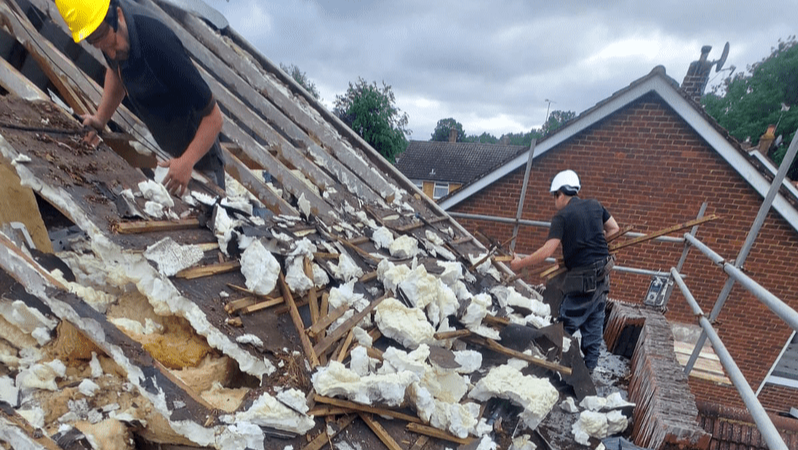 Why Dry Ice Blasting Is Not the Best Way to Remove Spray Foam
Why Dry Ice Blasting Is Not the Best Way to Remove Spray Foam
As insulation and home improvement experts, we at Countrywide Insulation are committed to providing our customers with the most effective and efficient solutions for their needs. Regarding removing spray foam insulation, various methods are available, but not all are created equal. In this blog, we'll explore why dry ice blasting, while touted as a solution for removing spray foam, may not always be the best choice.
1. Limited Effectiveness
Dry ice blasting involves using compressed air to propel dry ice pellets at high speeds, causing the foam to freeze and become brittle, making it easier to remove. However, while this method may work well for some applications, it is often less effective for removing spray foam insulation, especially in thicker or denser applications. The abrasive nature of dry ice blasting can sometimes result in incomplete removal, leaving behind residue that can be difficult to clean up.
2. Potential Damage to Substrates
Dry ice blasting can be abrasive, mainly when used at high pressures, potentially damaging underlying substrates such as wood, metal, or drywall. This is particularly concerning when removing spray foam insulation from delicate surfaces or areas with intricate details, with a higher risk of damage. In such cases, alternative methods that are gentler on substrates may be more suitable to avoid costly repairs or replacements.
3. Safety Concerns
Dry ice blasting involves handling and manipulating dry ice, which poses certain safety risks if not performed correctly. The frigid temperatures of dry ice can cause frostbite or injury if it comes into contact with the skin, and the rapid expansion of carbon dioxide gas can create hazardous conditions if not adequately controlled. Compressed air can also generate airborne particles and noise, requiring appropriate safety precautions and personal protective equipment for operators and bystanders.
4. Environmental Considerations
While dry ice blasting is often promoted as an environmentally friendly cleaning method due to its use of CO2 pellets, it is not entirely without environmental impact. The production and transportation of dry ice require energy and resources, and the release of CO2 during blasting contributes to greenhouse gas emissions. Furthermore, the disposal of waste materials generated during the process, including the removed spray foam and spent dry ice pellets, must be handled properly to minimize environmental harm.
5. Cost
Dry ice blasting can be costly to remove spray foam insulation, particularly for large-scale or complex projects. The equipment and materials required, including dry ice pellets and specialized blasting machines, can add up quickly, making it a less economical option than alternative methods. Additionally, the labour-intensive nature of dry ice blasting may result in higher labour costs, further driving up the overall project expenses.
Conclusion
While dry ice blasting may seem attractive for removing spray foam insulation, it is essential to consider its limitations and potential drawbacks. From limited effectiveness and potential substrate damage to safety concerns and environmental considerations, there are several factors to weigh when choosing a removal method. At Countrywide Insulation, we offer a range of safe and efficient removal solutions tailored to your needs. Contact us today to learn more about our spray foam insulation removal services. Let us help you find the best solution for your project.
Spray Foam Risks, Legality & When to Remove: FAQs
1. Is spray foam insulation a problem for homeowners?
It can be. Spray foam may cause moisture issues, mortgage complications, and structural risks, especially if installed poorly. Understand the core concerns here:
👉 Is Spray Foam a Problem?
2. Is spray foam loft insulation legal in the UK?
Yes, spray foam insulation is legal—but its use in lofts is controversial. It must meet strict standards and may impact your ability to sell or finance your home. Learn more:
👉 Is Spray Foam Loft Insulation Legal?
3. What should I expect from professional closed-cell spray foam removal?
Expect a careful, multi-step process that protects your roof and home while safely removing all foam. We break down the full procedure in this guide:
👉 Professional Closed-Cell Spray Foam Removal: What to Expect
4. Are there scams in spray foam removal services?
Yes — some unqualified operators offer removal services that cause more harm than good. Know the red flags to avoid getting scammed:
👉 Spray Foam Customers Warned About Removal Scams
5. Does spray foam insulation cause mortgage issues?
It can. Many lenders are reluctant to offer mortgages on homes with spray foam due to its potential risks. Learn how this affects buying, selling, or remortgaging:
👉 Spray Foam Insulation: A Look into Mortgage Issues
6. What are the top reasons to remove spray foam insulation?
From protecting structural integrity to restoring mortgage eligibility, there are many reasons to act. Explore the full list here:
👉 10 Reasons You Should Have Your Spray Foam Removed
7. What are the signs that it's time to remove spray foam?
Common red flags include musty odours, cracking foam, condensation, and roof problems. Don't ignore these early warning signs:
👉 5 Signs It's Time to Remove Your Spray Foam Insulation


